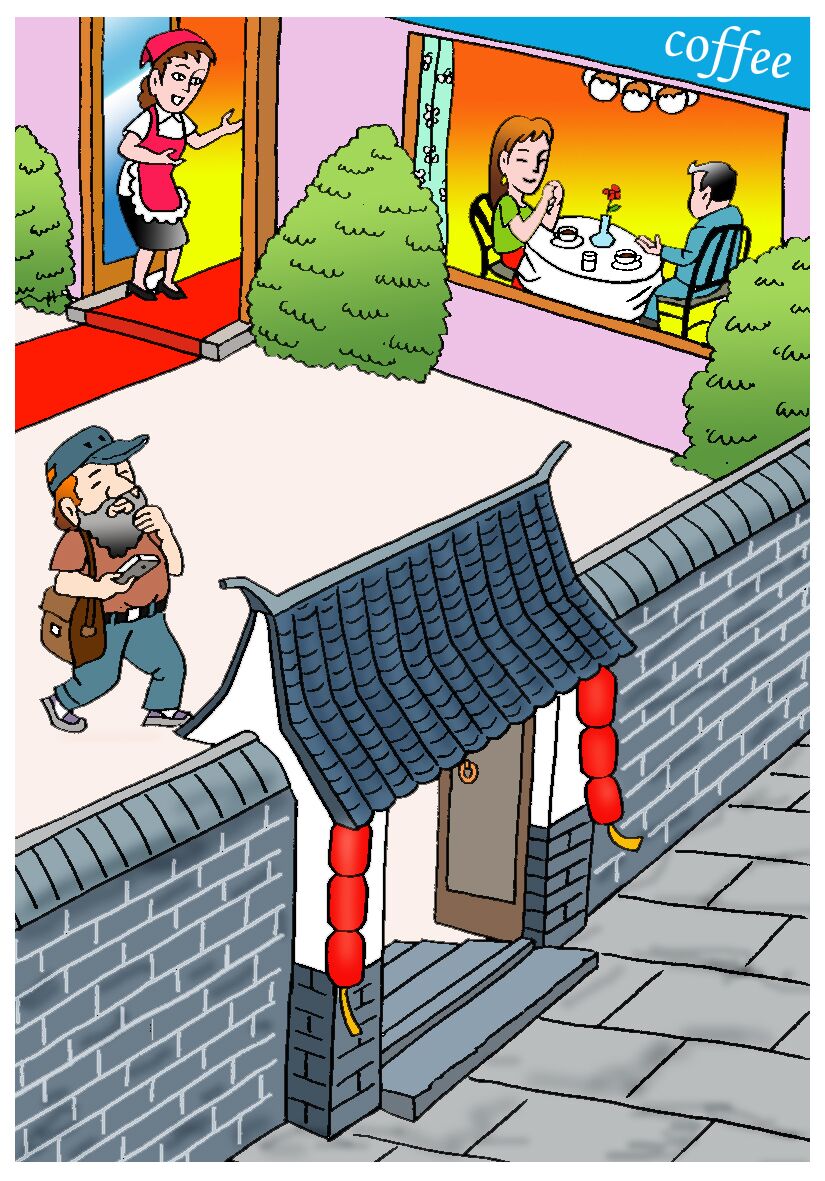Obsolete buildings get new lease on life

Turning obsolete, old buildings into treasure
Cartoon by Liu Zhiyong; Poem by Long Yuan
The renovation of the Wide and Narrow Alleys in Chengdu
Exemplifies the revitalization of obsolete, old architecture.
The distribution of courtyards was preserved;
Traditional building materials were used during reconstruction,
Retaining the antique style
And bringing traditional features to life.
Meanwhile, bars, restaurants and fashion shops,
As well as tea and coffee houses thrive,
Such as the Ark of Art in Ningbo,
And the 798 Art Zone in Beijing.
The integration of traditional and modern,
Chinese and foreign elements is evident.
In the whole wide world,
Such examples are abundant.
Viewed from the distance, Ningbo Museum of Art looks like an Ark of art. Located on the bank of Yong River, which is formed by the convergence of two rivers—the Fenghua River and Yao River—the museum is located where the shipping dock, the landmark building of Ningbo in Zhejiang Province, once stood from 1970s to 1980s.
After the Hangzhou-Ningbo Expressway opened, shipping service at the dock was suspended. As a result, the shipping terminal building became the “lost pearl” of the city. In 2003, notable Chinese architect Wang Shu oversaw the remodeling of the former terminal building into today’s museum of art, which houses artistic collection and archives while serving as a space for exhibition, cultural communication and recreation.
Discarded factories are also targets of renovation favored by artists. By the Suzhou River, Shanghai, there are many large warehouses, most of which were built in the 1930s and witnessed the germination and emergence of modern China’s national industry.
Though they were once slated for demolition under Shanghai’s urbanization plan, their fate changed in 1998 after they were discovered by architect Deng Kunyan, who decided to convert them. The warehouse was transformed into Deng’s own studio with marks on the walls specially retained to record the passing days. What Deng did was so influential that other architectural designers were inspired to follow in his footsteps. Altogether, 29 warehouses were transformed finally along the Suzhou River. These unwanted warehouses with rusty exteriors have taken on a new look, transformed into art districts full of cultural creativity.
